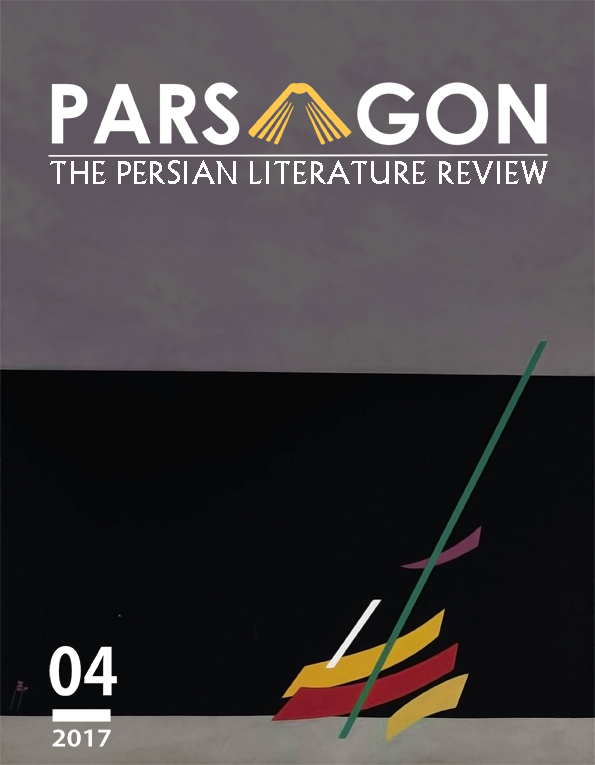
(c) Photo improved and reconstructed by AI, 2025.
Sohrab Sepehri (1928–1980) occupies a unique place in twentieth-century Iranian culture as both a poet and painter whose visual world richly complements his literary vision. Born in Kashan, he nurtured a deep intimacy with nature from childhood, growing up amid orchards and gardens that would echo throughout his work.⁽¹⁾ He later studied at Tehran’s Faculty of Fine Arts and embarked on extensive travels—to Paris, Rome, India, and Japan—where he immersed himself in lithography, Japanese aesthetic sensibilities, and spiritual philosophies.⁽²⁾
In Sepehri’s paintings, the sensibility of his poetry is reanimated as visual meditation. His canvases often collapse horizon, atmosphere, and form into quiet fields of tone and gesture. Themes of nature, stillness, and presence recur: trees, water, stones, and landscapes are not merely depicted, but sensed.⁽³⁾ Particularly from the 1960s onward, he distilled trees into close-ups of trunks or vertical segments, producing semi-abstract studies that balance minimalism with depth of feeling.⁽⁴⁾ These tree paintings, at once intimate and monumental, evoke permanence, rootedness, and the poetic mystery of existence.⁽⁵⁾
Sepehri’s aesthetic draws from a confluence of influences—Japanese calligraphy and Zen, Western abstraction, and Persian poetic tradition—which he wove into a contemplative, transcultural idiom.⁽⁶⁾ His palette is often muted and soft, his brushwork economical yet resonant, leaving space for silence and reflection.⁽⁷⁾ Underlying the visual language is his ideology: a belief that art and life must reconnect human consciousness to the delicate, sacred fabric of nature. He challenged habitual perception, urging the viewer to slow down, to see what is usually overlooked, and to feel the unity between inner and outer realms.⁽⁸⁾
For Sepehri, painting was not an additive process of description but a subtractive process of revelation—removing excess to allow what remains to speak. His visual and poetic works echo each other in their quiet insistence: that the world is always alive, that we are never separate from it, and that beauty lies in the delicate balance between being and seeing.

The cover art for Volume #04 of The Persian Literature Review is taken from an abstract painting by Sohrab Sepehri.
- Encyclopaedia Iranica, “Sepehri, Sohrab”
- Christie’s description and biographical sources
- Leila Heller Gallery (exhibition text)
- ZH Magazine article on his visual language
- ArtChart on his tree paintings and minimalism
- WikiArt and biography pages noting East–West synthesis
- Metropolitan Museum object commentary
- Mohit.art note on his challenge to habitual perception

Leave a Reply